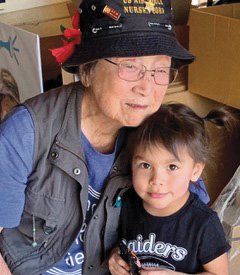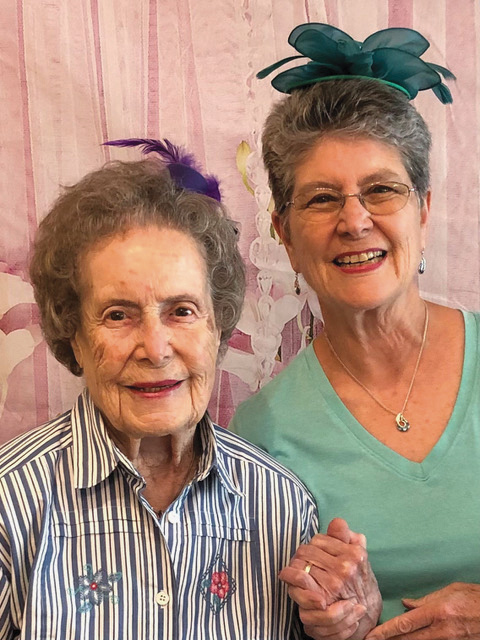Much has been written about Mickey Yamadera’s many years as a community activist and volunteer with ACC. She recently published Quest for Normalcy, chronicling her early years.
Miyoko Hayashi was born in September 1921 in Gardena, California. She was the third child of five. Her parents immigrated from Japan to farm in southern California. Her father, Jinzo Hayashi, arrived in 1910; her mother, Chito, in 1915.
When Mickey was a young child, both her mother and an infant brother succumbed to pneumonia. Jinzo tried growing vegetables as an independent farmer. His children harvested the crops. Unbeknownst to her, Jinzo “rented” out Mickey to the neighboring Tanaka family, so she could help with their family farm.
Jinzo struggled to feed his children. One day, he tried to steal a neighbor’s chicken and was shot in the arm. Medical complications resulted in him losing his right arm. Unable to work, he then lost his farm. Times were hard; each child was then placed with a different family. Mickey’s last home was with Dr. Mabelle Moore and her husband, Dr. Holbrook Rawson, in Culver City. She was treated very well by the family. Mickey and Aunt Mabe became fast friends.
Mickey graduated from Alexander Hamilton High School in 1940. She recalls going with her sister that summer to a Baptist Camp in Idyllwild Pines. They made new friends there, especially with Japanese boys!
When Pearl Harbor was bombed in 1941, Mickey was on the move again. Her first stop was at the Santa Anita Racetrack Assembly Center, and then to Amache Internment Camp in Colorado. She and her siblings stayed in Block 11G. She worked first as a hospital aide, and next as the Girls’ Recreation Director. When she wasn’t working, she wrote letters to the troops, up to nine letters a day.
In 1943, Mickey left Amache to work as a nurse’s aide in Ann Arbor. This is where she met her future husband, George Yamadera. He was an orderly in surgical services. From Oakland, George’s family was interned at Tule Lake. He stayed at Tule Lake until 1944, when he volunteered for the military. He served with the 442nd Regimental Combat Team and did his tour of duty in France and Italy.
In March 1944, Mickey moved to New York City. She worked in a factory making military hats and did other odd jobs to support herself and the war effort. During this time, Mickey and George were exchanging letters. His letters often mentioned getting married. Mickey finally said “yes,” three days before George was shipped overseas. Coincidentally, George and Mickey’s brother, Kaz, were on the same transport ship headed for Europe.
Mickey and George were married in 1945. Higher education was always important to Mickey; when the war was over, she supported the family while George studied pharmacy at the University of Utah. He graduated in 1957 when their two children, Karen and Richard, were young. He had a long 27-year career as a pharmacist. He and Mickey were married for 65 years before he passed away in 2010.
Mickey characterizes her life as one of perseverance, optimism and grit. Her children, three grandchildren and three great-grandchildren are all very proud of Mickey and all she has accomplished.
###
Related article: Mickey Yamadera, Volunteer’s Life at ACC by Ted Fong











